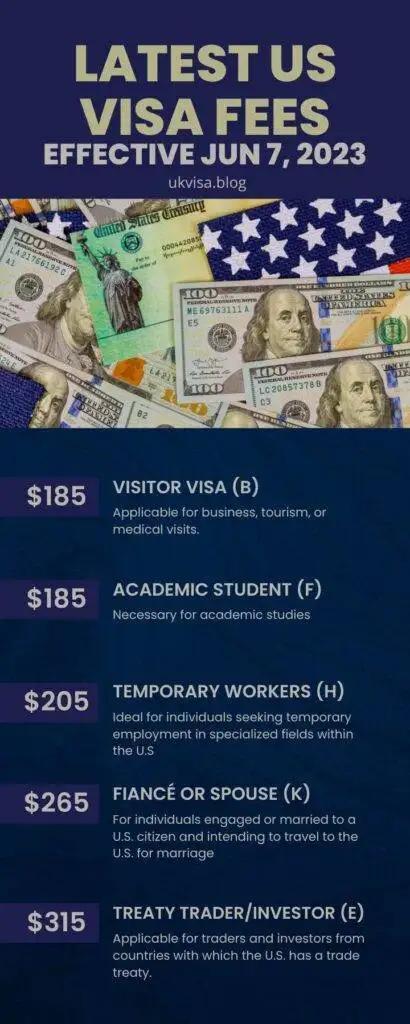The United States is preparing to implement a new travel fee that could affect millions of international visitors. According to a recent report by The New York Times,travelers hoping to enter the country may soon face an additional charge of $250. This proposed fee increase is part of a broader effort to enhance border security and manage the flow of visitors, but it has sparked concerns among travelers and industry experts about its potential impact on tourism and international relations.
Proposed Travel Fee Sparks Concerns Among Visitors
International travelers planning trips to the United States are facing growing uncertainty as a proposed travel fee could add an unexpected cost of $250 to their journeys.This additional charge aims to fund security and infrastructure upgrades at U.S. borders but has drawn criticism from travel industry experts and tourists alike. Many fear that the hike may deter visitors, especially from countries with tighter travel budgets, potentially impacting tourism revenue considerably.
Critics highlight several concerns regarding the fee:
- Economic impact: Disincentivizing casual travelers and family visits.
- Operational transparency: Questions about how the collected funds will be allocated.
- Equity issues: Whether fee waivers or reductions will be available for certain groups.
| Fee Aspect | Current Status | Predicted Effect |
|---|---|---|
| Charge Amount | $250 | Significant increase from current fees |
| Implementation Date | Proposed 2025 | Pending Congressional approval |
| Exemptions | Not finalized | Potential for limited waivers |
Understanding the Impact on International Tourism
Visa fee hikes threaten to reshape global travel patterns,posing significant barriers for tourists who once considered the U.S.an accessible destination. The new $250 surcharge is poised to disproportionately affect visitors from countries where the average travel budget is relatively modest. Consequently, travel agencies and international tour operators are already anticipating a decline in bookings, especially from regions like Southeast Asia, Latin America, and parts of Africa. This shift not only impacts individual travelers but could also ripple across sectors reliant on tourism spending,such as hospitality,retail,and cultural institutions.
Travel experts warn that beyond the immediate financial burden, this increase might slow down the recovery of the U.S. tourism industry post-pandemic. Countries competing for international visitors could capitalize on this chance, actively promoting friendlier, more affordable visa processes. The following table highlights a comparative overview of visa fees for popular tourist destinations:
| Country | Visa Fee | Processing Time |
|---|---|---|
| U.S. | $250 | 5-7 Days |
| Canada | $100 | 3-5 Days |
| Australia | $140 | 4-6 Days |
| France | $80 | 7-10 Days |
- Economic impact: Potential drop in foreign tourism revenue by several billion dollars annually.
- Traveler behavior: Increased preference for countries with lower visa costs and faster processing.
- Industry response: U.S. tourism stakeholders push for more competitive policies to attract visitors.
Government Justifies Additional Charge as Security Measure
The administration insists that the new fee, set at $250, is a necessary step to bolster national security. Officials argue this additional charge will fund enhanced screening technologies and expanded background checks,aiming to reduce risks linked to terrorism and other transnational threats. This move aligns with recent global security trends where vetting processes are tightened to protect citizens while maintaining controlled access for legitimate travelers.
Key points highlighted by government sources include:
- Investment in advanced biometric equipment at entry points
- Expansion of data analytics capabilities to identify high-risk applicants
- Strengthened cooperation with international law enforcement agencies
| Security Measure | Expected Impact |
|---|---|
| Facial Recognition Systems | Faster ID verification |
| Enhanced Background Checks | More complete threat assessment |
| Increased Border Personnel | Quicker processing times |
Tips for Travelers to Navigate the New Cost Effectively
Travelers planning a trip to the U.S. should consider several strategic moves to reduce the impact of the new $250 fee. Booking flights and accommodations well in advance often secures better prices before costs rise further. Additionally, travelers should explore alternate airports or entry points that might apply lower fees or have more competitive local charges. Being flexible with travel dates can also make a significant difference, as weekday or off-peak travel tends to offer more affordable rates.
To maximize value,keep these money-saving tactics in mind:
- Use credit cards that offer travel rewards or cash back specifically on airfare and international fees.
- Leverage travel apps to monitor price changes and alert you to deals that offset added costs.
- Consider booking package deals that bundle flights, hotels, and transportation, often locking in lower total prices.
- Review and adjust your travel insurance to ensure it covers potential additional expenses due to policy changes.
| Cost Factor | Typical Saving Strategy |
|---|---|
| Flight Bookings | Early reservations, choice airports |
| Accommodation | Combined packages, off-peak stays |
| Travel Fees | Rewards credit cards, fee alerts |
| Insurance | Policy reviews, supplementary coverage |
The Conclusion
As the U.S.government moves forward with plans to increase fees for certain visitor authorizations, potential travelers should prepare for the additional financial burden. While aimed at bolstering security and improving processing efficiency, the $250 surcharge underscores the growing costs associated with international travel. Prospective visitors are advised to stay informed of policy updates and factor these changes into their travel budgets. The coming months will reveal how these measures impact travel patterns and the broader tourism industry.



